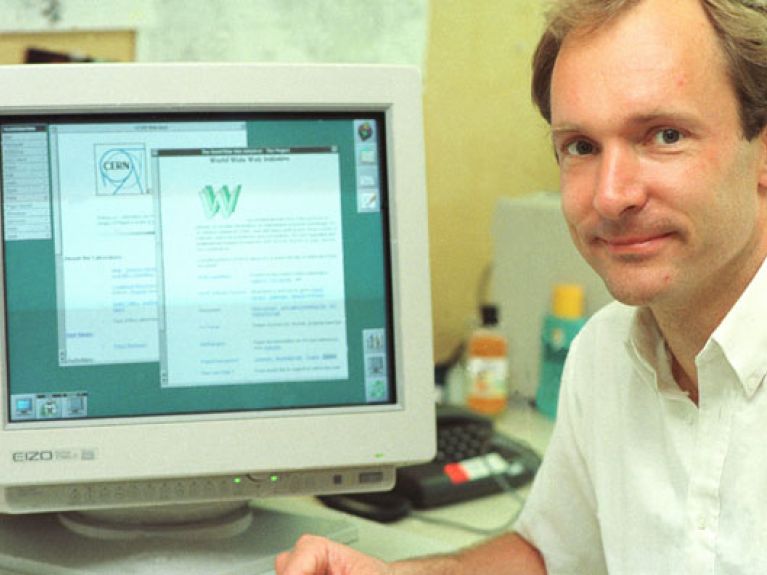The first website in the world
1990 the world’s first website went online in the World Wide Web – at the CERN Nuclear Research Centre in Geneva. A German researcher remembers.

Bernd Pollarmann was 30 years old when he started working as a physicist at the CERN Nuclear Research Centre in Geneva. “I went to CERN primarily because I was fascinated by the idea of working at a European research centre,” says Pollarmann, now over 70. In the 1980s the researchers were already using the internet, which had been developed in the United States, in so-called news groups and for sending emails. Surfing the net was not possible because there were no hyperlinks, and the developers were only able to exchange data via FTP servers.
Tim Berners-Lee was actually hired to develop something else
Bernd Pollarmann remembers that a certain Tim Berners-Lee worked in his team: “a genius, a man possessed,” as Pollarmann puts it. This British scientist was an expert in hypertext and was actually supposed to be developing software for high-energy physics. But he was fascinated by another idea: Berners-Lee wondered why parts of hypertext should be saved on the same computer, Pollarmann recalls. “He then set about changing this.” On 20 December 1990, Berners-Lee put the world’s first website online: http://info.cern.ch/hypertext/WWW/TheProject.html contained information and anecdotes on the development of the websites. It was the birth of the World Wide Web. Tim Berners-Lee is regarded as its founder.
Forerunner of Google: one of the first search engines
Team member and physicist Pollarmann developed one of the first search engines: XFIND. “I always had problems finding things,” he says. At this time staff members from 60 nations were working at CERN. Bernd Pollarmann is certain that the internet would not have been able to conquer the world without the websites. However, it experienced its first real breakthrough through the development of browsers like Firefox, Explorer and Mozilla, and search engines like Altavista or Google. They made the internet so simple that everyone could use it. “Not even Tim could have imagined that the internet would one day be used in the ways it is today; he would also be surprised by how much the content distributed by it was to change,” says Pollarmann.
Germany’s first website
By the way, even before CERN opened up the use of the World Wide Web to the general public in 1993, researchers at the Hamburg Acceleration Centre DESY, a CERN partner, were interested in the new technology. Thomas Finnern, graduate engineer at DESY, built a trial Web server and a website to link CERN with DESY. He thus probably created Germany’s first website. “The pages often took a long time to load – but we were satisfied if we were able to exchange texts and perhaps small pictures,” recalls Finnern, who still works at DESY today. The exciting thing was to fill the new communication tool with content. “It was impossible to predict where the development would end,” he says. “I first had to learn the programming code; it was all learning by doing. Today, I could have simply googled it.”
CERN, the European Organization for Nuclear Research based in Geneva, was founded in 1954 and today employs a staff of 3,200. Germany is its biggest contributor.
On 20 December 1990, the world’s first website went online at the CERN nuclear research centre in Geneva.


